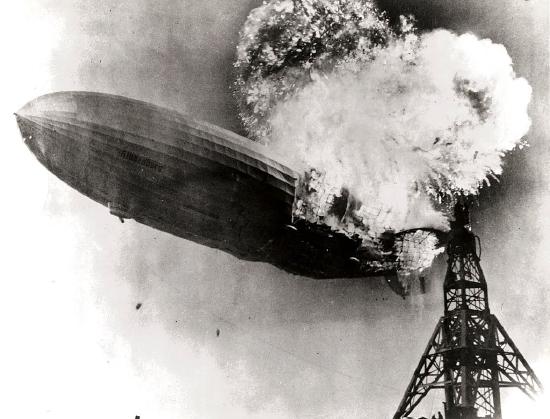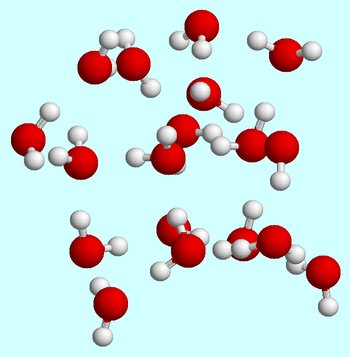Modeling the Formation of Water
- Page ID
- 49950
\( \newcommand{\vecs}[1]{\overset { \scriptstyle \rightharpoonup} {\mathbf{#1}} } \)
\( \newcommand{\vecd}[1]{\overset{-\!-\!\rightharpoonup}{\vphantom{a}\smash {#1}}} \)
\( \newcommand{\dsum}{\displaystyle\sum\limits} \)
\( \newcommand{\dint}{\displaystyle\int\limits} \)
\( \newcommand{\dlim}{\displaystyle\lim\limits} \)
\( \newcommand{\id}{\mathrm{id}}\) \( \newcommand{\Span}{\mathrm{span}}\)
( \newcommand{\kernel}{\mathrm{null}\,}\) \( \newcommand{\range}{\mathrm{range}\,}\)
\( \newcommand{\RealPart}{\mathrm{Re}}\) \( \newcommand{\ImaginaryPart}{\mathrm{Im}}\)
\( \newcommand{\Argument}{\mathrm{Arg}}\) \( \newcommand{\norm}[1]{\| #1 \|}\)
\( \newcommand{\inner}[2]{\langle #1, #2 \rangle}\)
\( \newcommand{\Span}{\mathrm{span}}\)
\( \newcommand{\id}{\mathrm{id}}\)
\( \newcommand{\Span}{\mathrm{span}}\)
\( \newcommand{\kernel}{\mathrm{null}\,}\)
\( \newcommand{\range}{\mathrm{range}\,}\)
\( \newcommand{\RealPart}{\mathrm{Re}}\)
\( \newcommand{\ImaginaryPart}{\mathrm{Im}}\)
\( \newcommand{\Argument}{\mathrm{Arg}}\)
\( \newcommand{\norm}[1]{\| #1 \|}\)
\( \newcommand{\inner}[2]{\langle #1, #2 \rangle}\)
\( \newcommand{\Span}{\mathrm{span}}\) \( \newcommand{\AA}{\unicode[.8,0]{x212B}}\)
\( \newcommand{\vectorA}[1]{\vec{#1}} % arrow\)
\( \newcommand{\vectorAt}[1]{\vec{\text{#1}}} % arrow\)
\( \newcommand{\vectorB}[1]{\overset { \scriptstyle \rightharpoonup} {\mathbf{#1}} } \)
\( \newcommand{\vectorC}[1]{\textbf{#1}} \)
\( \newcommand{\vectorD}[1]{\overrightarrow{#1}} \)
\( \newcommand{\vectorDt}[1]{\overrightarrow{\text{#1}}} \)
\( \newcommand{\vectE}[1]{\overset{-\!-\!\rightharpoonup}{\vphantom{a}\smash{\mathbf {#1}}}} \)
\( \newcommand{\vecs}[1]{\overset { \scriptstyle \rightharpoonup} {\mathbf{#1}} } \)
\(\newcommand{\longvect}{\overrightarrow}\)
\( \newcommand{\vecd}[1]{\overset{-\!-\!\rightharpoonup}{\vphantom{a}\smash {#1}}} \)
\(\newcommand{\avec}{\mathbf a}\) \(\newcommand{\bvec}{\mathbf b}\) \(\newcommand{\cvec}{\mathbf c}\) \(\newcommand{\dvec}{\mathbf d}\) \(\newcommand{\dtil}{\widetilde{\mathbf d}}\) \(\newcommand{\evec}{\mathbf e}\) \(\newcommand{\fvec}{\mathbf f}\) \(\newcommand{\nvec}{\mathbf n}\) \(\newcommand{\pvec}{\mathbf p}\) \(\newcommand{\qvec}{\mathbf q}\) \(\newcommand{\svec}{\mathbf s}\) \(\newcommand{\tvec}{\mathbf t}\) \(\newcommand{\uvec}{\mathbf u}\) \(\newcommand{\vvec}{\mathbf v}\) \(\newcommand{\wvec}{\mathbf w}\) \(\newcommand{\xvec}{\mathbf x}\) \(\newcommand{\yvec}{\mathbf y}\) \(\newcommand{\zvec}{\mathbf z}\) \(\newcommand{\rvec}{\mathbf r}\) \(\newcommand{\mvec}{\mathbf m}\) \(\newcommand{\zerovec}{\mathbf 0}\) \(\newcommand{\onevec}{\mathbf 1}\) \(\newcommand{\real}{\mathbb R}\) \(\newcommand{\twovec}[2]{\left[\begin{array}{r}#1 \\ #2 \end{array}\right]}\) \(\newcommand{\ctwovec}[2]{\left[\begin{array}{c}#1 \\ #2 \end{array}\right]}\) \(\newcommand{\threevec}[3]{\left[\begin{array}{r}#1 \\ #2 \\ #3 \end{array}\right]}\) \(\newcommand{\cthreevec}[3]{\left[\begin{array}{c}#1 \\ #2 \\ #3 \end{array}\right]}\) \(\newcommand{\fourvec}[4]{\left[\begin{array}{r}#1 \\ #2 \\ #3 \\ #4 \end{array}\right]}\) \(\newcommand{\cfourvec}[4]{\left[\begin{array}{c}#1 \\ #2 \\ #3 \\ #4 \end{array}\right]}\) \(\newcommand{\fivevec}[5]{\left[\begin{array}{r}#1 \\ #2 \\ #3 \\ #4 \\ #5 \\ \end{array}\right]}\) \(\newcommand{\cfivevec}[5]{\left[\begin{array}{c}#1 \\ #2 \\ #3 \\ #4 \\ #5 \\ \end{array}\right]}\) \(\newcommand{\mattwo}[4]{\left[\begin{array}{rr}#1 \amp #2 \\ #3 \amp #4 \\ \end{array}\right]}\) \(\newcommand{\laspan}[1]{\text{Span}\{#1\}}\) \(\newcommand{\bcal}{\cal B}\) \(\newcommand{\ccal}{\cal C}\) \(\newcommand{\scal}{\cal S}\) \(\newcommand{\wcal}{\cal W}\) \(\newcommand{\ecal}{\cal E}\) \(\newcommand{\coords}[2]{\left\{#1\right\}_{#2}}\) \(\newcommand{\gray}[1]{\color{gray}{#1}}\) \(\newcommand{\lgray}[1]{\color{lightgray}{#1}}\) \(\newcommand{\rank}{\operatorname{rank}}\) \(\newcommand{\row}{\text{Row}}\) \(\newcommand{\col}{\text{Col}}\) \(\renewcommand{\row}{\text{Row}}\) \(\newcommand{\nul}{\text{Nul}}\) \(\newcommand{\var}{\text{Var}}\) \(\newcommand{\corr}{\text{corr}}\) \(\newcommand{\len}[1]{\left|#1\right|}\) \(\newcommand{\bbar}{\overline{\bvec}}\) \(\newcommand{\bhat}{\widehat{\bvec}}\) \(\newcommand{\bperp}{\bvec^\perp}\) \(\newcommand{\xhat}{\widehat{\xvec}}\) \(\newcommand{\vhat}{\widehat{\vvec}}\) \(\newcommand{\uhat}{\widehat{\uvec}}\) \(\newcommand{\what}{\widehat{\wvec}}\) \(\newcommand{\Sighat}{\widehat{\Sigma}}\) \(\newcommand{\lt}{<}\) \(\newcommand{\gt}{>}\) \(\newcommand{\amp}{&}\) \(\definecolor{fillinmathshade}{gray}{0.9}\)We have modeled the constituents of water, but how do models of two gases (the elements hydrogen and oxygen), help in understanding how water is the basis of life? Dalton’s third postulate states that atoms are the units of chemical changes. When the gases hydrogen and oxygen are mixed and the mixture is ignited, water vapor forms (it will later condense to liquid water as the fire subsides). The reaction releases a lot of heat as you can see in this photo of the explosion of the Hindenburg:

There are many videos of hydrogen explosion on the web or YouTube, as well as videos of the Hindenburg and the disaster. These spectacular videos show evidence for a chemical change: weaker H-H and O-O bonds break (that's why we need to add energy, or ignite, the mixture), but then formation of very strong H-O bonds in water, H-O-H releases a lot of energy.
Huge Hydrogen & Oxygen Balloon Explosion
Soon after the two gases are mixed together and energy is added, a rearrangement of atoms begins. The overall change can be seen in this animation, but the "mechanism" of the reaction is complex, as we will see later when we study kinetics.
The net result is that two hydrogen atoms of each H2 molecule become separated and combine instead with oxygen atoms (the hydrogen atoms may attack oxygen molecules, breaking them up). When the chemical reaction is complete, all that remains is a collection of water molecules, each of which contains one oxygen atom and two hydrogen atoms. Notice that there are just as many oxygen atoms after the reaction as there were before the reaction. The same applies to hydrogen atoms. Atoms were neither created, destroyed, divided into parts, or changed into other kinds of atoms during the chemical reaction.

The view of water is our first microscopic example of a compound. The model suggests what we already know: water molecules have much different properties than hydrogen or oxygen; specifically, they tend to clump together to form a liquid. Each molecule of a compound is made up of two (or more) different kinds of atoms. Since these atoms may be rearranged during a chemical reaction, the molecules may be broken apart and the compound can be decomposed into two (or more) different elements.
The formula for a compound involves at least two chemical symbols—one for each element, present. In the case of water, each molecule contains one oxygen and two hydrogen atoms, and so the formula is H2O. Both The figure and the formula tell you that any sample of pure water contains twice as many hydrogen atoms as oxygen atoms. This 2:1 ratio agrees with Dalton’s fourth postulate that atoms combine in the ratio of small whole numbers.
Although John Dalton originally used circular symbols like those in figure to represent atoms in chemical reactions, a modern chemist would use chemical symbols and a chemical equation like
\[ \underbrace{2 H_2 + O_2}_{\text{Reactant(s)}} \rightarrow \underbrace{2 H_2O}_{\text{ Product(s)}} \label{1}\]
This equation may be interpreted microscopically to mean that 2 hydrogen molecules and 1 oxygen molecule react to form 2 water molecules. It should also call to mind the macroscopic change shown in the photographs. This macroscopic interpretation is often strengthened by specifying physical states of the reactants and products:
\[2 H_{2(g)} + O_{2(g)} \rightarrow 2 H_2O_{(l)} \label{2}\]
Thus gaseous hydrogen and gaseous oxygen react to form liquid water. [If a reactant or product is a solid, the symbol like H2O(s) might have been used. Occasionally (c) may be used instead of (s) to indicate a crystalline solid.] Chemical reaction such as Equation \(\ref{1}\) and \(\ref{2}\) summarize a great deal of information on both macroscopic and microscopic levels, for those who know how to interpret them.
From ChemPRIME: 2.3: Macroscopic and Microscopic Views of a Chemical Reaction
References
- ↑ www.umass.edu/microbio/chime/...er10/index.htm
Contributors and Attributions
Ed Vitz (Kutztown University), John W. Moore (UW-Madison), Justin Shorb (Hope College), Xavier Prat-Resina (University of Minnesota Rochester), Tim Wendorff, and Adam Hahn.


